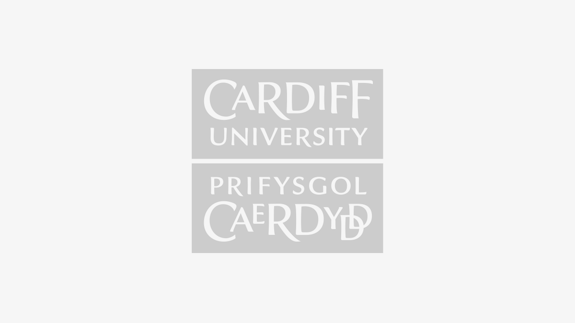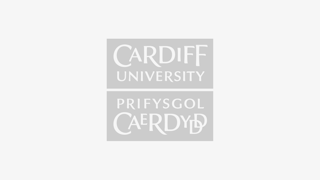Three Bronze Age cremations have been discovered underneath a popular playing fields, as volunteer archaeologists resume excavations there.
The Caerau and Ely Rediscovering (CAER) Heritage Project, a partnership between Cardiff University, Action in Caerau and Ely (ACE), local schools, residents and heritage partners, is once again at Trelai Park for the fourth phase of its archaeological investigation.
A new structure has been discovered next to the roundhouse that was previously found. Next to the foundations of this smaller building, a number of pits have been located, with at least three holding a small amount of cremated human remains.
The well-preserved roundhouse that was initially found two years ago dates back to 1500 BC. Last year, evidence of an even earlier roundhouse was found underneath it, suggesting the house had been replaced at some point.
There is also evidence of a timber circle further down, which experts believe may date to the Early Bronze Age around 2000-1600 BC.
Volunteers are now working to piece together the significance of the latest finds, which suggest the site could be more expansive than previously thought.
CAER co-director Dr Oliver Davis, Head of Archaeology and Conservation at the University's School of History, Archaeology and Religion, said: "The discovery of these cremations is hugely exciting and is yet another example of the rich history that lies so well preserved under Trelai Park. The fact that the cremations have been buried so close to the roundhouse suggests they may have been laid there to remember cherished family members. It could also mean the site held a ceremonial significance to people at the time.
"The smaller structure we have found sits very near to the original roundhouses we discovered in 2023; these structures were luxurious and spacious. This smaller structure could be an additional house for another family, or maybe an ancillary building used for preparing food and craft-working.
"This area, which we already knew was only 200 metres away from a Roman Villa, has clearly been an important place over thousands of years. It's providing us with a window onto some of the very earliest Cardiff residents who were living here in Caerau and Ely over three millennia ago. The work now begins to carefully dig through each layer, sifting through the materials we are finding here on an hourly basis. It's a real team effort."

Trelai Park is a well-used location for sports teams and dog walkers. It is half a mile from Caerau Hillfort, a heritage site of national significance where Neolithic, Iron Age, Roman and medieval finds have previously been discovered.
Alice Clarke, 36, who lives in Caerau, has been volunteering with the CAER Project for five years.
She said: "It's really fascinating. We've found a lot of quartz here so far. I will also work at the CAER Heritage Centre after the dig, cleaning all the finds that come in big bags. I love doing it. It's given me confidence - it's nice to get out and meet friends."
Fellow volunteer Hannah Secker, 19, from Grangetown, has just finished her A Levels and wants to study archaeology and ancient history at degree level.
She said: "There is quite an exciting atmosphere here and everyone has been so welcoming. I had no archaeological experience before coming here and it's been great to speak to students about their degrees. It's unbelievable finding artefacts that could be 3,000 years old and thinking about the people that have walked on this ground before us."
Linda Burnell, a retired business owner from Canton, said: "I can't wait for summer each year. I've learnt so much here and it just connects me to this environment and to the community."
Dan Queally is due to graduate from Cardiff University with a BA in Archaeology. He chose to do his dissertation on the CAER Project and has spent the last year volunteering at the CAER Heritage Centre.
He said: "I've loved meeting the volunteers who come to the centre week in week out to help clean and categorise finds. I've enjoyed the chats over cups of tea. It's not just about the archaeology that I've learned about, it's about seeing the difference a project like this can make to people here and now. It's been a big perspective shift for me."
CAER co-director Dr David Wyatt added: "The finds from Trelai Park just keep coming. When you piece these latest discoveries with the Roman Villa that's a short walk away and the more recent sporting history here, it's not difficult to argue that Trelai could be one of the most important parks for heritage in South Wales. It really has all the potential to be a popular and thriving tourist attraction which could hugely benefit the local communities."
Sam Froud-Powell, Operational Development Manager at ACE said: "The ACE team is thrilled by the remarkable finds at this year's community dig. This is a hugely exciting moment for our CAER partnership with Cardiff University, as we continue to grow our programme of community heritage and learning at the CAER Centre - bringing the University into the heart of our community.
"The annual community dig is a cornerstone of our partnership, uniting people from across Ely and Caerau to work alongside University students and staff. The dig enables people of all ages to connect, develop new skills, build friendships, and uncover and share knowledge about our extraordinary local heritage.
"We're deeply grateful for the sustainability funding from Cardiff University, which enables us to support, develop, and showcase the incredible knowledge, talent, activism, and warmth that thrives in Ely and Caerau."
Mike Tate, headteacher of Cardiff West Community High School, which is metres from the site, said: "As a school we see real value with our links with this project. Our pupils learn about the history of the area in which they live and they, literally, get their hands on the past. The experiences through the project bring subjects in school to life and can ignite engagement for our pupils. We are really pleased to continue this work."








